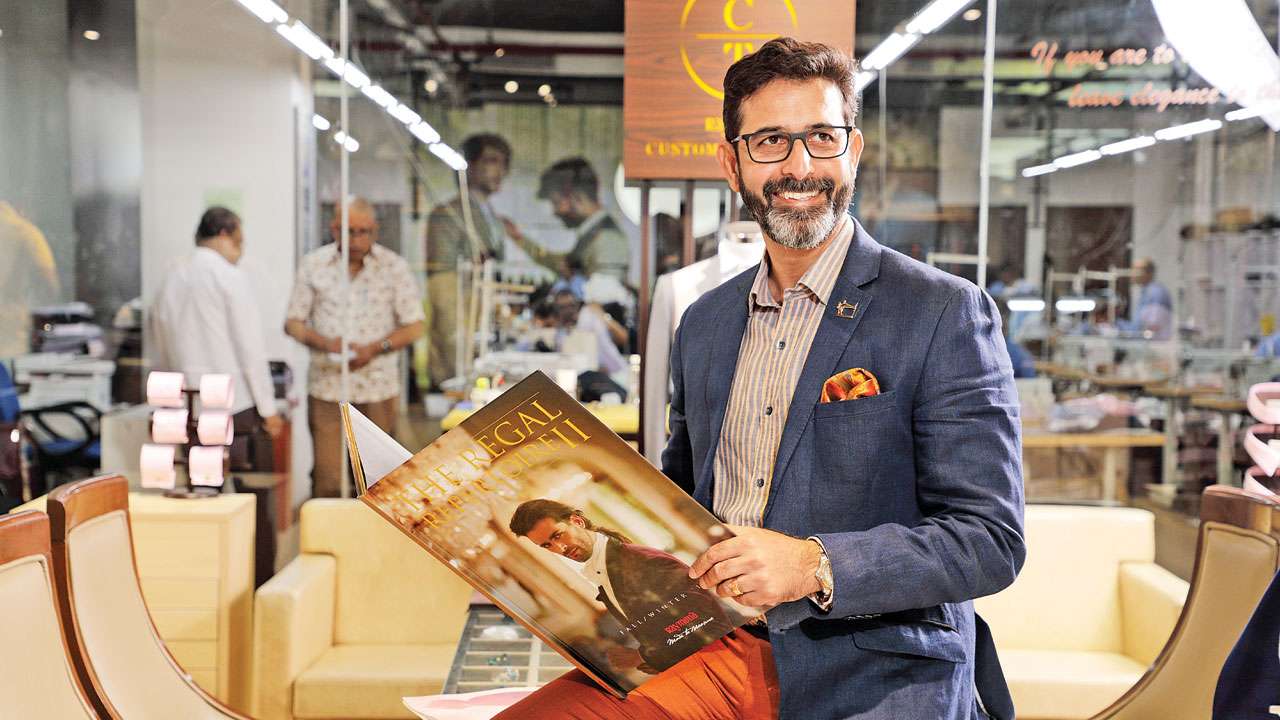
A little over two years ago, textile and apparel brand Raymond came up with the Mini The Raymond Store (TRS) concept targeting potential consumers in Tier II and III markets. Taking the franchise route, Raymond has opened a little over 200 outlets under the Mini TRS concept so far and the company is looking to add 100 such stores annually, over the next few years. Mohit Dhanjal, director – retail, Raymond Ltd, in conversation with Ashish K Tiwari speaks about the Mini TRS concept, existing footprint and future plans.
Around two years ago we were trying to evaluate a digital plan to further expand The Raymond Store network. We looked at our census data of 2011 and realised there were 1,200 urban towns with a population of over 50,000. Through our internal assessments and past retailing experience, we knew that we needed a minimum threshold population of 50,000 people in a town to be sustainable. So there are 1,200 such towns in the market and we were present in only 387 of them. There were additional 800 towns on paper for us to expand. However, the operational TRS model then was slightly large with a store size of 2,500 square feet requiring an investment of Rs 1.5 to Rs 2 crore.
While this model is profitable across the over 300 towns, we needed a new store model for the next 800 towns. Besides, we needed to partner with entrepreneurs who knew these markets. While we had a presence in about 100 such towns — out of the 400 towns 100 were small towns — we studied what works and what doesn't, what's an ideal size etc. This gave birth to a new model called the Mini TRS. These stores are not bigger than 800 sq. ft. and can be set up with an investment is Rs 50 lakh. And it took 15 to 20 days for the Mini TRS outlets to get operational compared to two-three months for large size The Raymond Store concept.
It had to be curated according to the market it was going into. So for example, if you’re setting up a store in Punjab then you do a lot of suiting and shirting fabrics. In the south, for example in Tamil Nadu, you would do a lot of shirting and trouser-ing fabrics. And if you’re in Kerala, where largely people wear a lot of shirtings and pair it with Mundus (Lungis), not trousers. Or if you go to Gujarat people prefer wearing a lot brighter colour shirts. So we had to curate the product mix accordingly.
In September of 2016, we developed the model, studied this for six months and in March 2017 we launched our first new store in Bihta, an industrial belt that's about 50 kilometres from Patna. That store gave us the desired results. In fact, it surprised us and from there we rolled out our model commercially. By April 2018, we had set up about 100 outlets in the newer towns and markets. Six months later, we launched another 100 outlets. In fact, just last week we inaugurated our 200th optimised store in the country. That apart, we crossed another benchmark by opening a store in the 500th town. So from a lifestyle apparel brand, today we are the largest branded player with an exclusive store in 500 markets. No other brand has such a presence. So from 380 towns, we now have a presence in over 500 towns. Actually, 510 towns as we opened 13 stores in the second half of last week.
About 100. Like I said earlier, we have 800 potential towns. So far we have launched in 200 of them. So separately we have on paper at least another 600. So yes I would expect this run rate to continue for a couple of years. At least the next two-three years.
I would say 60% are single store owners. The balance is our existing partners who already have a retail store.
From our calculations, breakevens are almost at an annualised sale of Rs 50 lakh. But this varies on the size of the store. You could do a 600 sq. ft. store or you could do a 1,200 sq. ft. Rentals will depend on the size of the store and city/town you're in. On an average, I would say you do about Rs 50 lakh per annum you break even. Surprisingly, what we are seeing is that the stores are doing almost twice of that.
That's where we utilise and depend on our partner’s knowledge because our entrepreneurs are based out of these towns. While we have a recommended offering if an entrepreneur says that in my market we have people coming from the villages for a wedding and they might want to buy the premium product, s/he is free to choose anything. We don’t restrict. It is largely run by consumer demand and the knowledge of our retailing partner.
On the readymade part, we actually launched a new brand called Next Look. It was introduced in time with our Mini TRS model. For the readymade, we felt that we needed to have a price point of between Rs 900 and Rs 1,800. There was a gap and Next Look brand really helped bridge it. This brand is about 18 months old since the time we launched our first store. New Look along with other value brands such as Parx largely take up most of the presence in the readymade apparel section for these stores. Approximately 70% of our business comes from fabrics and 30% from apparels. These stores are largely fabric led but we have seen very good traction for readymade, which is why we also developed the brand Next Look with lower price points.